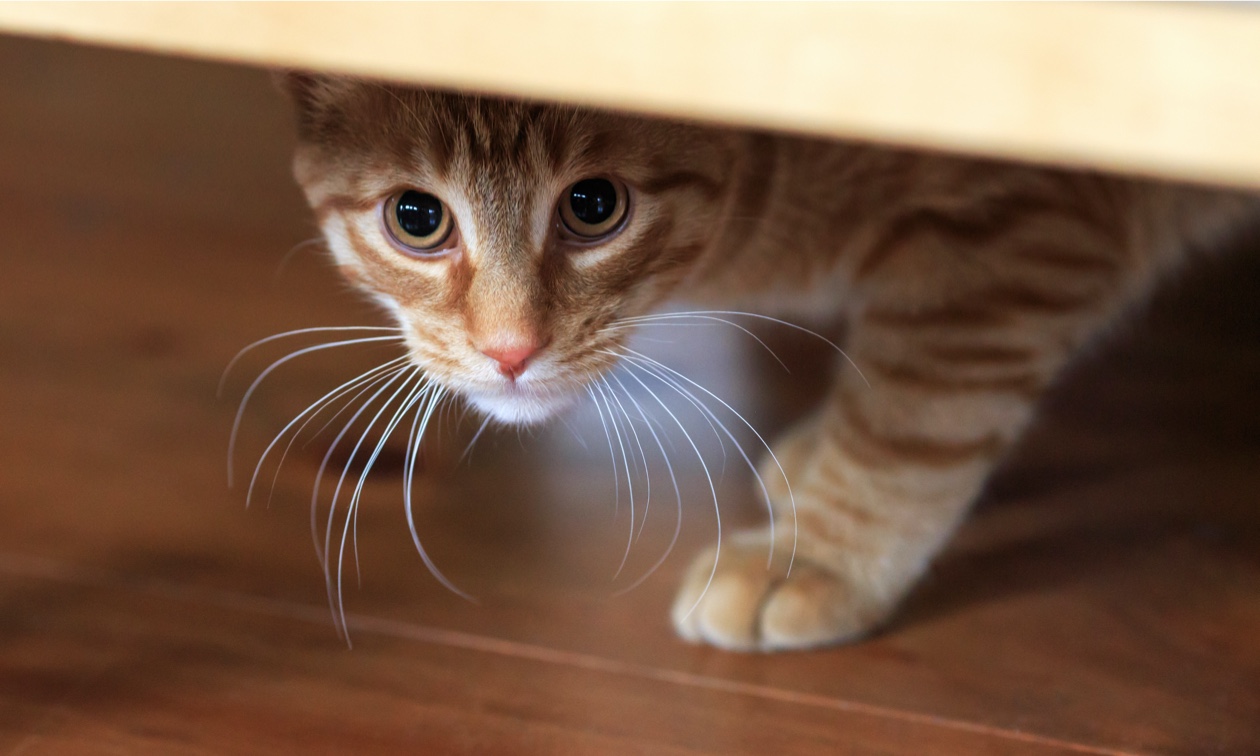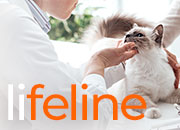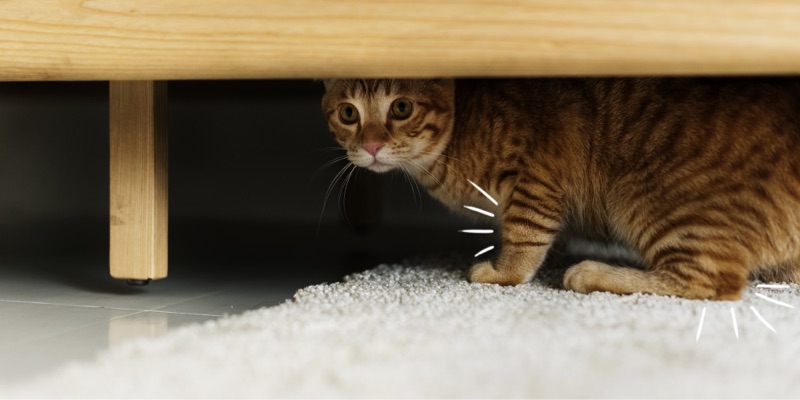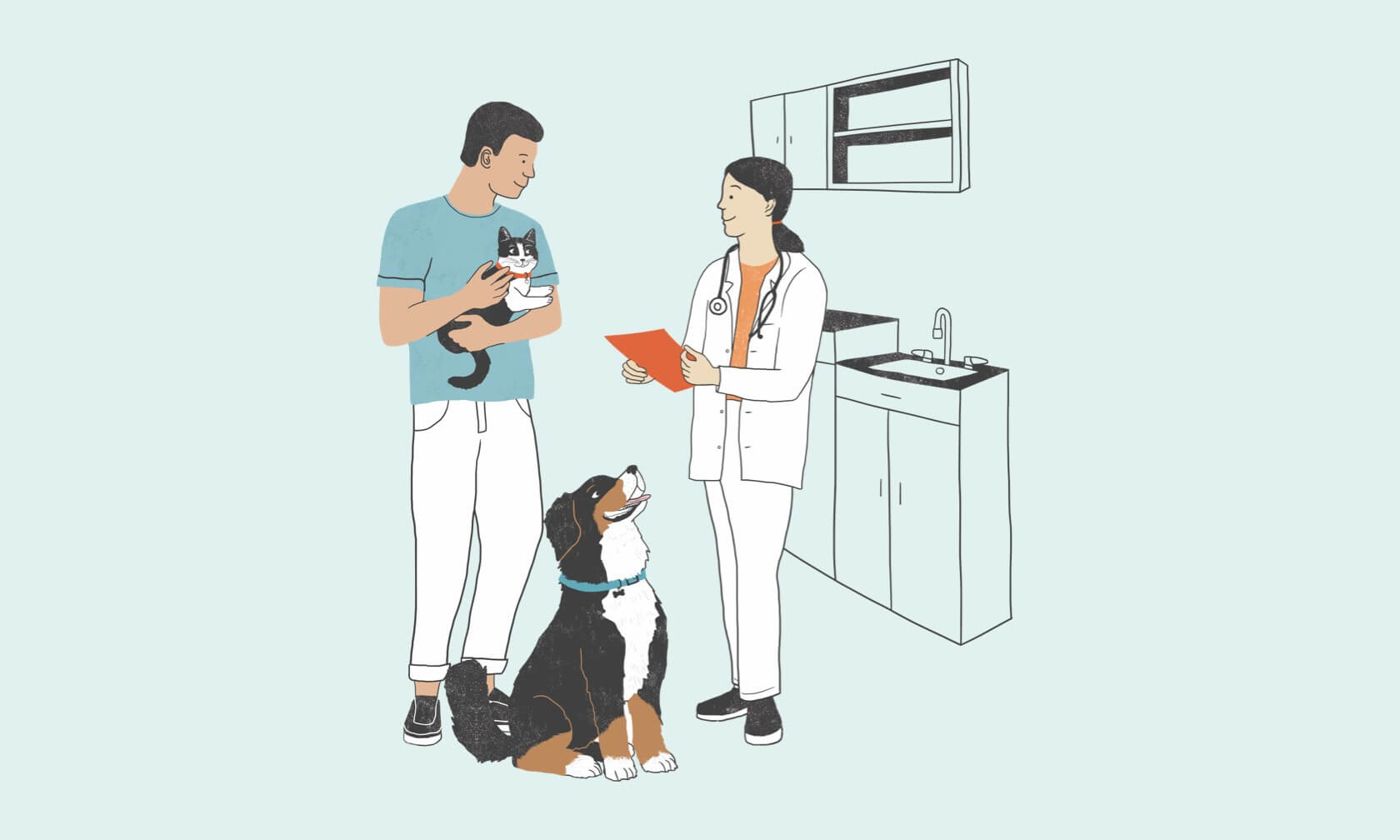Cats are individuals, each with a unique set of traits that shape their personalities. Because of this, it may be easy for you to tell when they’re just not themselves. Sometimes it means your cat is just having an off day, but there are signs to look out for that could mean your cat needs medical attention. Learning how to tell if your cat is sick can help prevent their condition from worsening.
Hiding
If your social kitty is suddenly hiding from you, it could be a cause for concern. Cats will often hide when they’re feeling stressed, sick, or injured. If attempts to lure them out with their favorite treat or toy are unsuccessful, make an appointment to see their veterinarian for an exam. If the hiding is accompanied by vomiting or changes in their litter box, it’s best to bring them for an emergency evaluation as it could indicate something more time-sensitive like a digestive or urinary obstruction.

Not Peeing
If your cat is not urinating or straining to pee and very little comes out, get them to the vet immediately! This is a concerning sign of a possible urinary tract obstruction (also called urethral obstruction), a deadly condition if not recognized and treated promptly.
Not Pooping
If your cat isn’t producing a poop daily or is straining in the box to do so, it could be a sign of constipation warranting medical attention. Just be careful not to confuse straining to poop (uncomfortable, but not necessarily a medical emergency) with straining to pee (a very serious medical emergency). Always err on the side of caution here.
Eating or Drinking More Than Normal
If your cat’s appetite or thirst suddenly increases, and it’s not easily explained away by pregnancy or an increase in activity, it could be a sign of a number of conditions, including an overactive thyroid gland (hyperthyroidism), kidney failure, diabetes, and many others.
Eating or Drinking Less Than Normal
If your cat’s appetite or thirst suddenly decreases, it could be a sign of a range of problems, too. Among the possible causes for these signs are pain (like from arthritis or dental/tooth pain), digestive upset or obstruction, advanced kidney disease, an infection, and a host of other possible medical issues. If your cat isn’t eating, don’t wait to contact your veterinarian. If this isn’t addressed quickly, it can lead to a type of liver disease that is often fatal.
Vomiting
If your cat is throwing up, it can be a sign of a digestive blockage, irritation, infection, or even heartworm disease. It can also be a sign of pancreatitis or a metabolic disorder, such as kidney failure. It’s important to take your cat to the vet if they’ve been vomiting longer than a day, if there’s any blood or foreign material in their vomit, if their vomiting is associated with a decrease in their urination, or they’ve vomited more than 3 times in a 24-hour period. And even if they’re “just” bringing up hairballs, anything more frequent than once per week warrants a medical workup to look for an underlying cause.
Diarrhea
Cats will have soft poops occasionally, but when it lasts for more than a day, has blood in it, or is accompanied by other concerning signs, it’s best to take them to the vet as soon as possible.
Change in Weight
Whether it be weight gain or loss, changes in your cat’s weight can be possible indicators of underlying problems. Sure, weight gain could just be that you’re overfeeding them, but it could also be diabetes, fluid buildup (e.g., from heart disease or liver problems), or another medical condition. Similarly, weight loss could indicate kidney disease, cancer, an overactive thyroid gland, intestinal worms or other parasites, and a host of other issues. Either way, a veterinary check-up sooner rather than later is always a good idea.
Decreased Energy
If your crazy cat suddenly (or even gradually) becomes lethargic, that’s a concerning change. It could indicate pain (like from arthritis or even an infected cat bite abscess), anemia (condition of decreased red blood cells), heart disease (including heartworm disease), or another issue.
Peeing or Pooping Outside of Their Litter Boxes
Not only is this inconvenient and upsetting for you, but these signs can also indicate a range of problems for your cat. It could be that something in their environment is stressing them out or it could indicate a medical problem that warrants investigation. It’s important to note that cats don’t do this out of revenge — cats with osteoarthritis, for example, may not be able to climb over the sides of the litterbox. Either way, bring them to your veterinarian sooner rather than later so you can quickly get to the bottom of it, for everyone’s benefit.
Itching or Chewing on Fur
Cats are fastidious by nature and may scratch at themselves occasionally, but an overall increase in itching behavior could indicate parasites (e.g., fleas, mites), a skin infection with bacteria and/or yeast, ringworm (which is actually a fungus, not a worm), or even allergies.
Coughing
Coughing in cats isn’t always obvious and many people mistake it for a cat trying (unsuccessfully) to bring up a hairball. But coughing is often a sign of asthma, heartworm disease, pneumonia, and many other problems of the heart and lungs in cats.
As you can see, there are many wide ranging symptoms of a sick cat. Don’t wait until your cat is sick to visit the veterinarian. Establishing a relationship with your vet allows them to notice changes over time that you may overlook or not know to look for. If your cat’s stress keeps you from taking them to the hospital, learn what you can do to ensure your cat has a stress-free vet visit.
ZPC-00437R2





